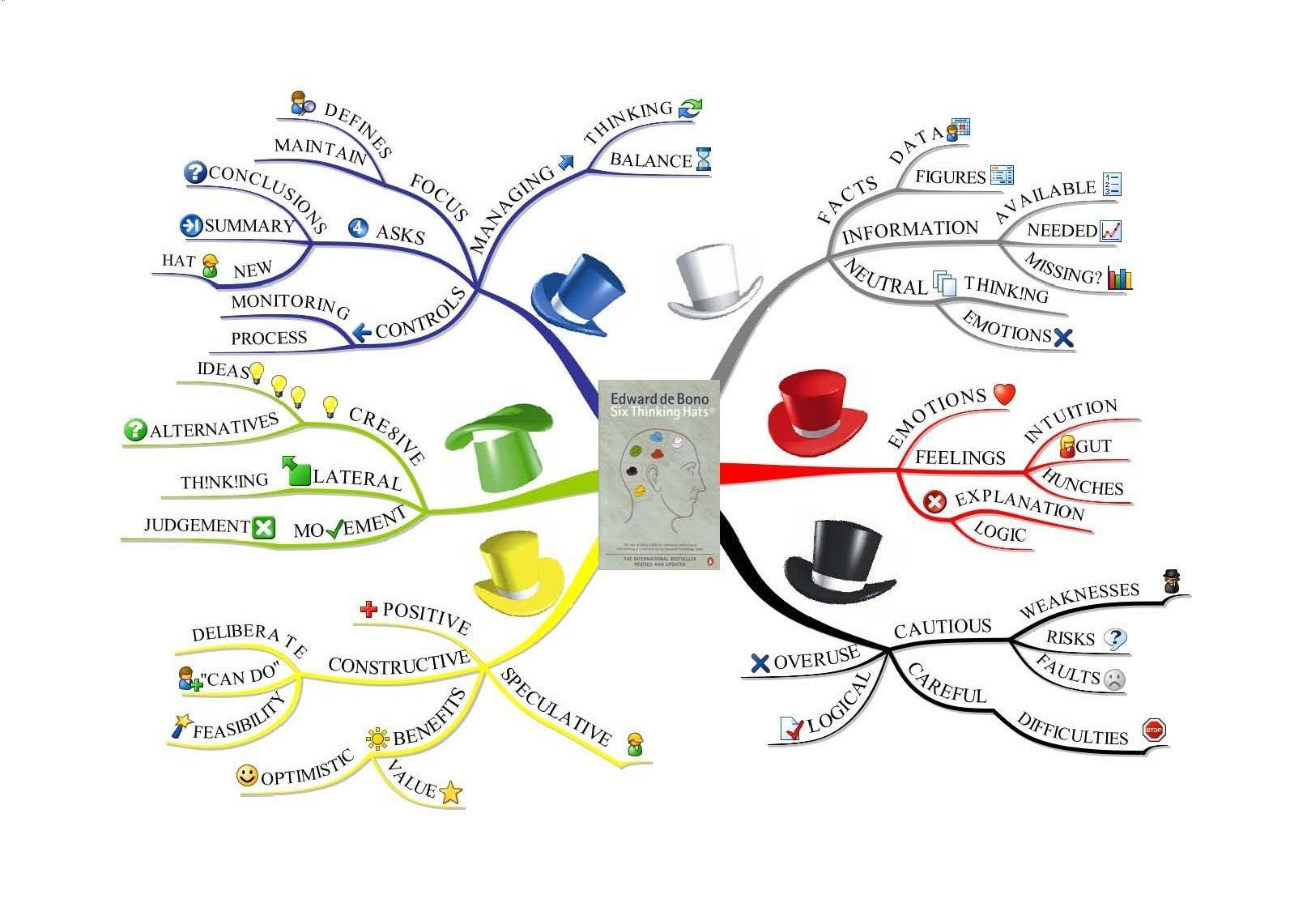DCI-08 Six Thinking Hats ® – Module Overview
Edward de Bono’s Six Thinking Hats® is one of the most powerful thinking frameworks for collaborative creativity. Developed in the mid-1980s, Six Thinking Hats was an instant success with many business leaders. When Dr de Bono was in Australia launching the book, I was a senior executive with a team of nine managers, and after hearing this new ‘theory’ and Edward’s challenge to ‘figure out what to do with them’ I embraced the techniques and within weeks my team was actively using the Six Thinking Hats.
Since then I have introduced Six Thinking Hats and de Bono’s work to 1000s of people in over ten countries, and remain a great fan of his work. The Six Thinking Hats are a beautifully simple tool for parallel thinking, which was explained in the previous eModule (DCI-07). By using the Hats framework you can focus a team more directly and draw out much deeper thinking – faster and more collaboratively.
When using Six Thinking Hats on your own, you can stop your head from ‘spinning’ as the Hats ensure you thoroughly explore the situation and allocate the time for better idea generation. We describe creative thinking as thinking that helps shift perception, from which new ideas and solution can develop. Six Thinking Hats help this process in a wonderfully effective and collaborative way.
To get the most from this lesson, we recommend you get a copy of Dr de Bono’s book on Six Thinking Hats.
[easy-social-share]
Learning Outcomes
Content
Exercises using de Bono’s Six Thinking Hats
Butter Stick Exercise
After watching the video on Sequencing Six Hats try this exercise on the Butter Stick concept. Design a sequence, explaining the order of the Hats and the focus for each hat (what it is designed to reveal). For fun, do the actual thinking as well – imagine you work for a Dairy company and are looking at this as a possible new product. Does this ‘new’ concept have any potential?
When done ask yourself if your sequence worked well, was the logic there and did it reveal more or less than you might have expected? While this is just a fun exercise (hopefully) it is very much like a real analysis a company might do as a preliminary evaluation of a new product, service or other concept.
Improve a Process with Six Thinking Hats
In this exercise we’d like you to use Six Thinking Hats to improve a process you are involved with. Keep it relatively simple. Look around you for a process you and/or your colleagues, team, family do on a regular basis that you recognise warrants improving. It should be something where the improvements are not easy to spot, or not easy to action. For example around the office there may be administrative processes that could be improved (payroll, recruitment, induction, etc). In a retail operation it could be service or staff related (e.g. training a new staff member). At home it could be getting the whole family involved in keeping the house clean, or making the next camping trip more fun and less stress.
Pick something, anything will do. Then put on your Blue Hat to write out your Focus Statement (see eModule on Focus), then design a sequence that will reveal what has happened in the past with the process. What worked, what didn’t, what needs improving etc. Then Green Hat ideas to improve the process (see eModules on Ideation to strengthen your Green Hat.
Start by designing your sequence, including allocating sufficient time for each hat. If you are involving others be sure they are engaged in the process and understand what you are doing, then go through the thinking using your Hats sequence.
Once done, reflect on how your Six Hats sequence worked, how good was your thinking, did the exploration hats make it easier to come up with some creative Green Hat ideas? Have fun.


